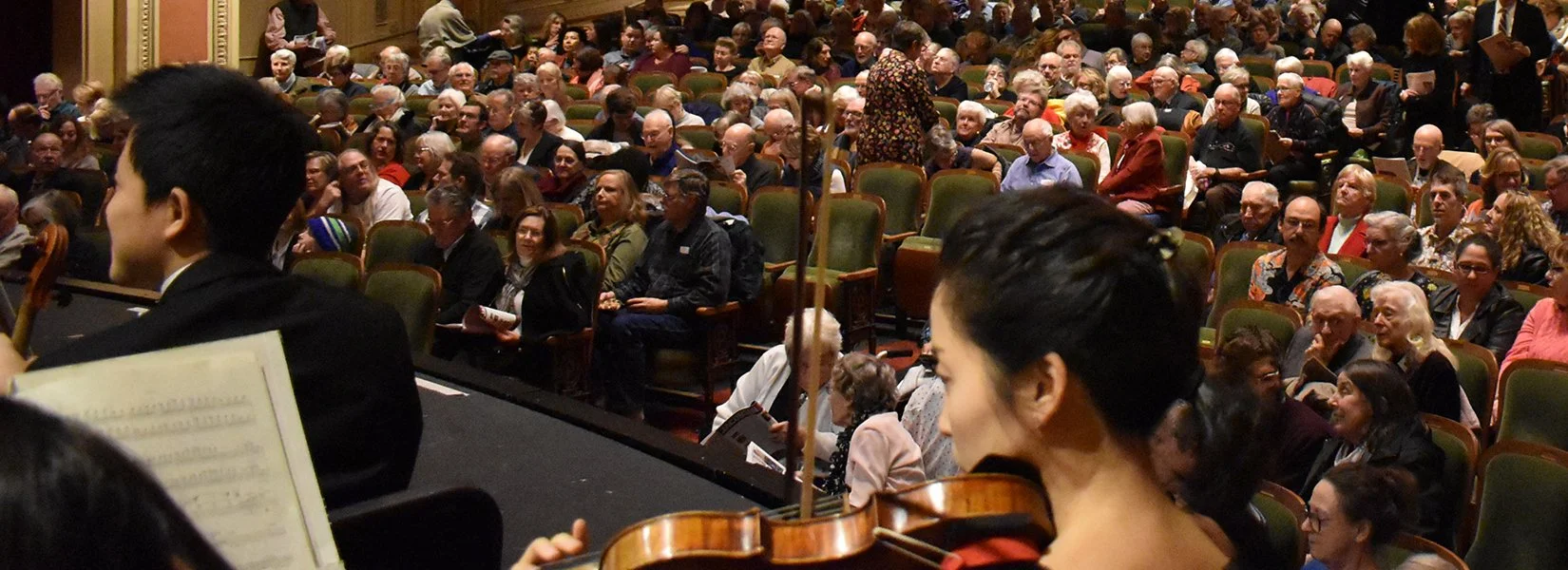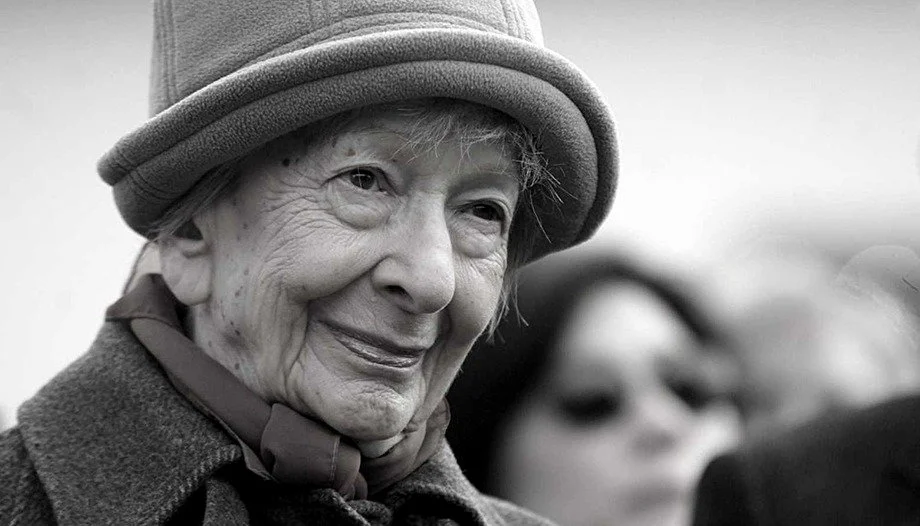Live or Memorex?
The performing arts are in trouble.
Post-pandemic theater attendance isn’t recovering as some had expected. In recent weeks, I’ve read or heard reports of struggling theaters in New York, Chicago and California, and they are mere examples of a nationwide crisis: Half of theaters nationwide are expecting to lose money this fiscal year. Classical music struggled during the pandemic, but recently it has fared better. Still, no one in the performing arts is resting easy—marketing departments are always working overtime. We’re all accustomed to calls to "support the arts" by attending performances, telling friends, giving money, writing politicians about improving funding.
I’m all for “support,” but going to a performance isn’t just about altruism. Concerts and plays are thrilling, consoling, fun, exhilarating, heart-rending, soothing, hilarious. You should "support" the arts for the same reason you eat ice cream, watch football, stumble through a wedding polka, hug your dog or sink into a whirlpool. Because it is a source of pleasure.
There are near infinite ways to stream recordings, videos, films, podcasts, etc. In that way, we are awash in creative endeavors. But when I say “performing arts,” I mean events in which there are live performers in front of an audience.
What’s the difference? To help me count the ways, I went to hear The Prometheus Trio in Milwaukee this week. All the pieces they played were easily available online. So what did I gain from going to hear them performed live?
Keeping in mind the doom-and-gloom news in the ether, I looked and listened with particular attention to the live experience. Here are some of the things that made me smile.
Allison Lovera
A glimpse of young Ludwig: Before the sturm und drang, before the tortured creation in the cold silence of his deafness, before the scowling, deeply introspective visage of his portrait, Ludwig von Beethoven was a young student, an admirer of Franz Joseph Haydn. And he was kinda. fun. The Trio in G Major, Op.1, No. 2, is dedicated to Haydn, and is rife with Haydn's brand of humor and wit. In the first movement, for example, after some furious piano passages, things get very, very quiet and the violin and cello tentatively trade a little two-note riff, sounding a little like they're lost and waiting for the piano to show the way. Violinist Allison Lovera and cellist Scott Tisdel were kinda having fun, too. The glance they exchanged at that moment made me chuckle.
The more-than-occasional smile on pianist Stefanie Jacob's face. The joy of a particularly transporting passage? The satisfaction of negotiating a flurry of 32nd notes? Whatever the source, it was great to see the joy of the music reflected in her eyes.
The rich, melancholic sound of Tisdel's cello in the second movement of Dvorak's Piano Trio in B-flat Major. Later Tisdel is joined by Allison Lovera's violin and the duet gels into a lovingly harmonized lullaby. The pair swayed in unison to the arc of the line.
The zing of a fast glissando--played in unison by violin and cello--that punctuates the rhythm of Astor Piazzola's nuevo tango encore. Watching the pair’s left hand dart up the fingerboard made that zing more palpable.
The folks in the elegant recital room of Milwaukee’s Wisconsin Conservatory of Music—where the trio plays four concerts a season—heard and saw these things as they happened. They couldn’t answer a text. They couldn’t hit pause to go get another beer. They couldn’t push a remote button to bounce over to see how the Bucks were doing. They were in the room to watch and listen. And I think they were happy to be there.
Sean Mason
Sean Mason has been playing around the New York clubs for a few years, but his debut album, “The Southern Suite,” shows that he is a composer and pianist that is going to attract attention. (Click on the song title links below to hear for yourself.)
True to his roots, the 26-year-old North Carolina-native kicks off the album with a riff right out of a country hoedown. “Final Voyage” digs into a catchy—but refreshingly askew—rhythm, and moves into a straight ahead swing that showcases the solo talents of his quintet.
Sean Mason
Other tracks on the album have a similar pedigree: tradition with a twist that doesn’t get in the way of the groove. "Kid” is built around a breakneck, faintly Caribbean bebop-ish melody (think Sonny Rollins doing “St. Thomas), which continues under Mason’s solo. The slow and slinky "Lavender" somehow finds a full Gil Evans sound from a few instruments in the harmonized opening melody. Bassist Felix Moseholm has an extended solo midstream, but this tune is more about Mason the arranger, who constructs a gentle little tone poem punctuated by short, alternating solo flights by trumpeter Tony Glausi and tenor saxophonist Chris Lewis.
“SilkyM” riffs on an infectious 10-note theme before moving into a heavy backbeat solo section that lets saxophonist Chris Lewis tear it up.
Mason’s style is definitely a throwback of sorts—it reminded me most of Miles Davis’s Birth of the Cool and other classic West Coast arrangements—but he throws enough innovation and soul at you to keep things very fresh. These days, jazz pundits declare a new wunderkind pretty regularly, but I think Sean Mason will endure long past his debut.
History Lesson
Isabel Wilkerson
More than a decade has passed since Isabel Wilkerson won the National Book Award for The Warmth of Other Sons, her monumental study of the great African-American migration north in the first part of the 20th century. But “study” is hardly the right word for history this vivid and dramatic. It balances the big picture—statistics, contemporary accounts—with the intimate stories of three people who were among the millions of blacks that left the Jim Crow south to relocate in the north and west. Wilkerson interviewed them in the late 1990s and heard their stories firsthand. Here’s part of her introduction to one of these characters.
She has an endearing gap in her teeth, which go just about any which way they please, and her hair is now as soft and white as the cotton she used to pick not particularly well back in Mississippi. She is the color of sand on a beach, which she had heard of growing up but had never seen for herself until she arrived in Chicago half a lifetime ago. She has big searching eyes that see the good in people despite the evil she has seen, and she has a comforting kind of eternal beauty, her skin like the folds of a velvet shawl.
Her name is Ida Mae, and she is a long way from where she started back in the hard soil of the eastern foothills of Mississippi during the century's adolescence. She leans forward and adjusts herself for a long conversation. Her hazel eyes grow big as she begins to tell her story.
The American Buffalo
Ken Burns' latest deep dive into this story weighs in at a mere 4 hours--barely a music video to his operatic looks at the Civil War, baseball and jazz. But The American Buffalo is an epic in its right, a monumental history told through an examination of the shaggy, 2,000-pound behemoths that once roamed freely in much of the country.
The story of the buffalo, it turns out, is the story of America—from its early native cultures to European colonization, the embrace of Manifest Destiny and the capitalist exploitation of the land and its resources. The tribes that relied on the buffalo for the sustaining of body and spirit treated it with reverence and a savvy sense of conservation and coexistence. European settlers, by contrast, saw it as a resource to be exploited—they found a market for buffalo hides, used first as fashionable clothing and then as material for belts that drove industrial machinery. The ravenous demand devastated the herds. In a single decade the buffalo population in America dropped from more than 12 million to fewer than 1,000. After that, the “bone trade” created a market for the skeletons left behind, which were ground up and used to manufacture fertilizer and refine sugar.
That’s only the beginning of story. The American Buffalo continues, describing the cultural and commercial forces that helped make the buffalo an icon of America and the initiatives that have brought the animal back from near extinction. It ends on a note of hope that caps a story of cruelty, greed and cultural annihilation that needed to be told.
A Poem for the Week
A few weeks ago, I recommended digging into poems by Louise Glück. Even with a little guidance, she's not an easy read. Understanding a poet, or adjusting your sensibility to her, can be a long and daunting process. Which is why I always appreciate a good curator.
Wisława Szymborska
I've found one on the web page of The American Scholar. In a weekly feature called "Read Me a Poem," editors--often with the help of readers--select a poem and turn it over to the satin voiced Amanda Holmes. Just listen and take it all in, or follow along by seeking out the text at the Poetry Foundation website.
Here's one of Holmes’s recent selections, "Consolation" by the Polish Nobel Prize winner Wisława Szymborska, translated by Clare Cavanagh. These days, we could all use a bit of consolation.
Consolation
Darwin.
They say he read novels to relax,
But only certain kinds:
nothing that ended unhappily.
If anything like that turned up,
enraged, he flung the book into the fire.
True or not,
I’m ready to believe it.
Scanning in his mind so many times and places,
he’d had enough of dying species,
the triumphs of the strong over the weak,
the endless struggles to survive,
all doomed sooner or later.
He’d earned the right to happy endings,
at least in fiction
with its diminutions.
Hence the indispensable
silver lining,
the lovers reunited, the families reconciled,
the doubts dispelled, fidelity rewarded,
fortunes regained, treasures uncovered,
stiff-necked neighbors mending their ways,
good names restored, greed daunted,
old maids married off to worthy parsons,
troublemakers banished to other hemispheres,
forgers of documents tossed down the stairs,
seducers scurrying to the altar,
orphans sheltered, widows comforted,
pride humbled, wounds healed over,
prodigal sons summoned home,
cups of sorrow thrown into the ocean,
hankies drenched with tears of reconciliation,
general merriment and celebration,
and the dog Fido,
gone astray in the first chapter,
turns up barking gladly
in the last.
Have a good week. I’m taking a week off, but The Friday Five will be back on Dec. 22 with my version of that year-end ritual, The Top Ten List.





